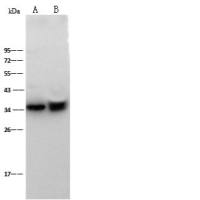Using γ-Secretase Inhibitors to Distinguish the Generation of the Aβ Peptides Terminating at Val-40 and Ala-42
互联网
398
A large body of evidence suggests a causative role of β-amyloid (Aβ) in the pathogenesis of Alzheimer’s disease (reviewed in refs. 1 and 2 ). Aβ is neurotoxic and toxicity requires the formation of amyloid fibrils similar to those found in senile plaques (3 ). Autosomal dominant mutations linked to Alzheimer’s disease were identified in three different genes (4 ,5 ). All mutations apparently alter amyloid precursor protein (APP) metabolism to increase the generation of Aβ peptides terminating at amino acid Ala-42. Due to the tendency of the longer Aβ peptides to more readily form fibrils (7 ), these may accelerate Aβ deposition, which ultimately leads to more aggressive, early onset forms of Alzheimer’s disease (8 ). With the transgenic expression of APP in mice this was explored further (9 ). Whereas a twofold overexpression of APP did not lead to Aβ deposition, the same quantitative expression of APP with a mutation at codon 717 known to increase the formation of Aβ42 led to the appearance of Aβ deposits at the age of 18 mo. These data suggest that the Aβ load in the brain as well as the amyloidogenic properties of the Aβ isoforms directly regulate deposition and senile plaque formation.









